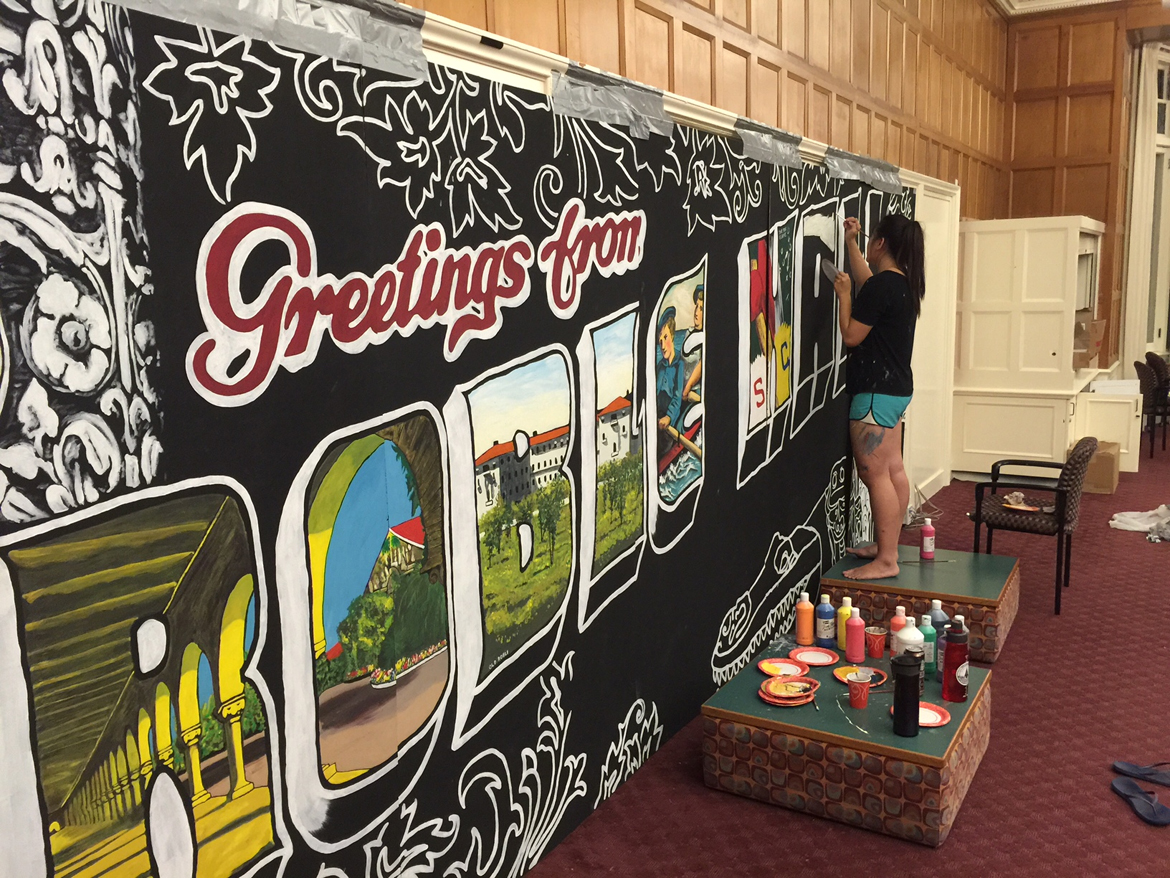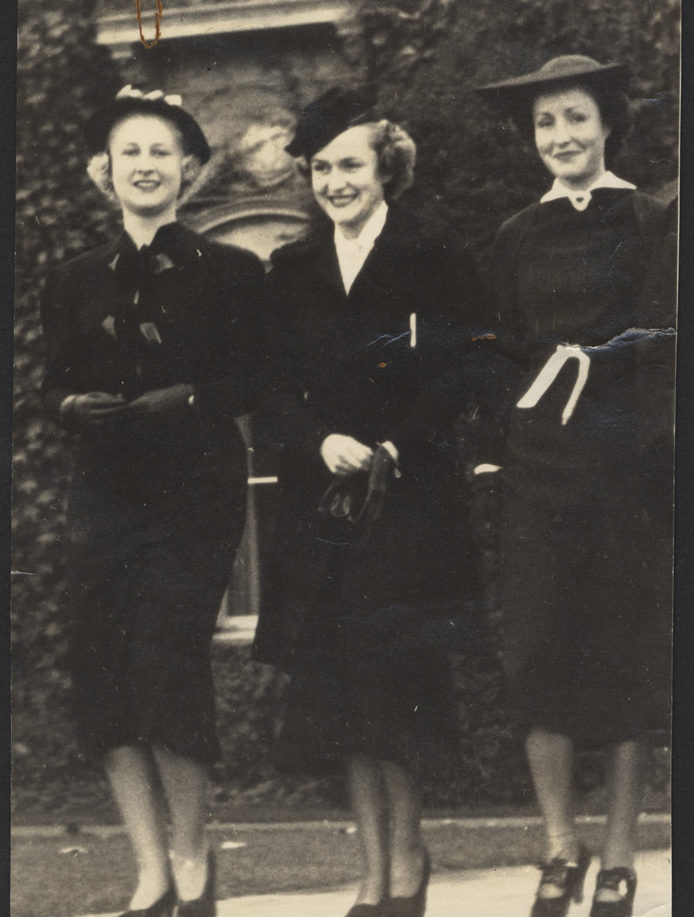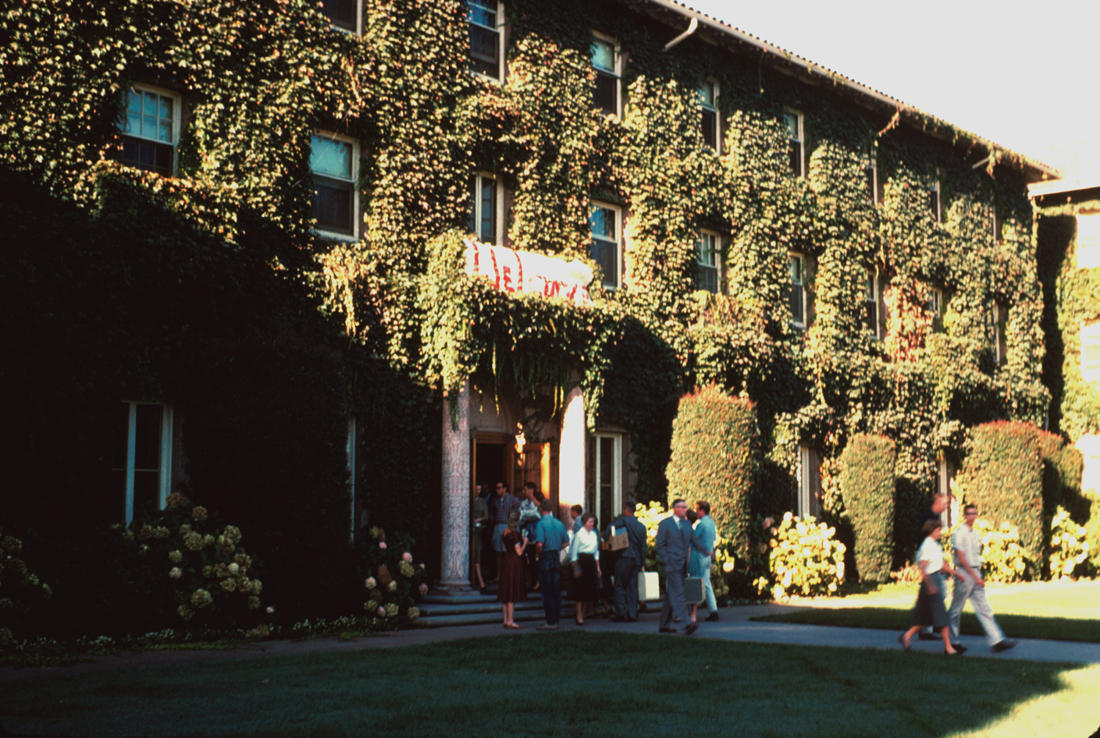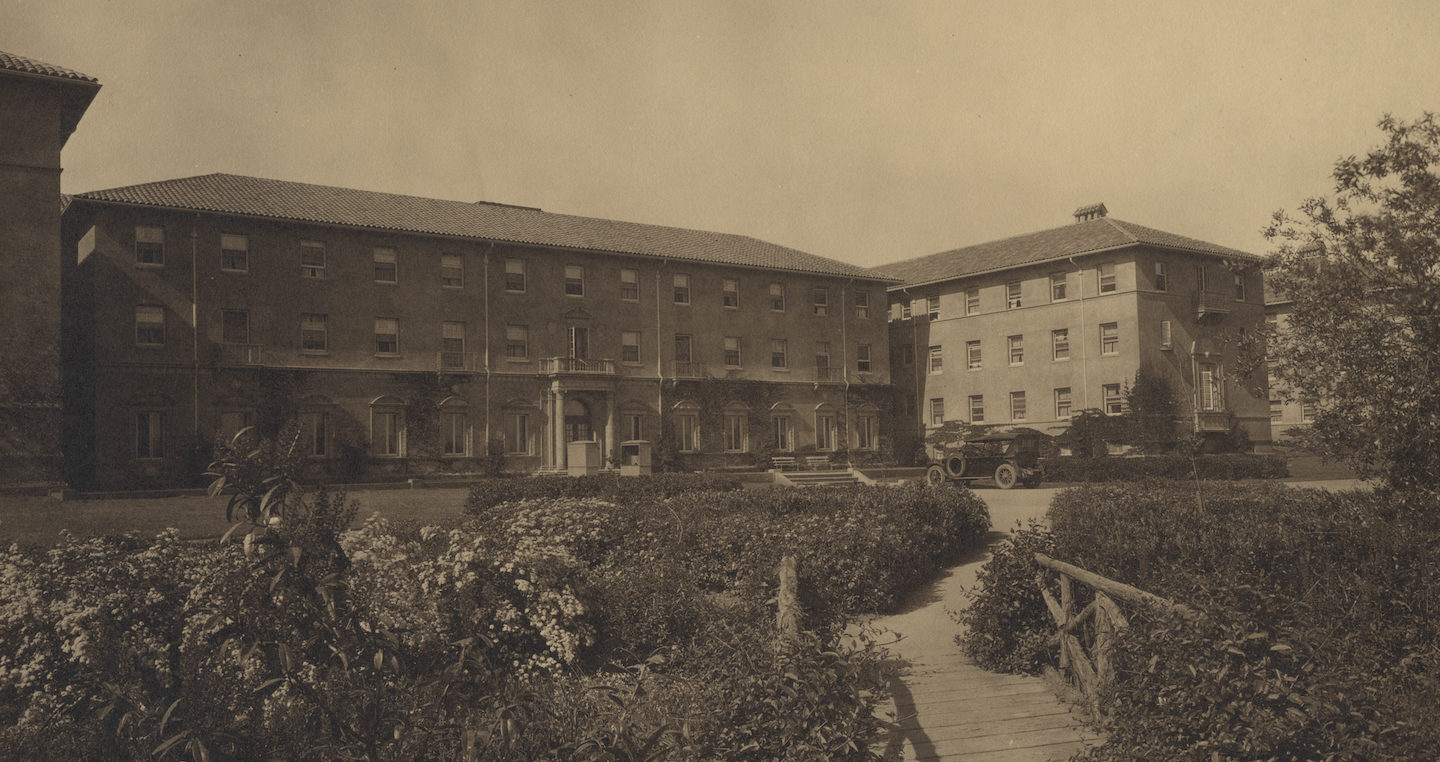Student mural honors vitality of residential life
Roble Hall opened in 1918 as Stanford’s women’s residence. Partly because Stanford was then so rural, partly because of early Stanford leaders’ educational philosophy, having students live and learn in community was from the start a key aspect of the Stanford experience.
Much has changed at Stanford since 1918, but Roble is still a dormitory – albeit coeducational – where undergraduates meet peers from around the world, learn from each other, and experience community life within a large research university. It is the oldest building continuously used as a Stanford dormitory.
Art student Vivienne Le ’19, a Roble resident in 2015-16, paid tribute to Roble’s legacy in a mural at the dorm that she completed in June 2016. Le’s Greetings from Roble Hall is in a retro postcard style that incorporates vignettes of Stanford and Roble life over 125 years.
Le calls it “my way of thanking the wonderful friendships and mentors I’ve created in my first year at Stanford for great memories, huge opportunities, and new insights.” An art practice and archaeology major, she said the project began in a series of whiteboard doodles that she drew in the Roble lobby.
Roble resident fellows Becky Bull and Jeffrey Ball, along with Stanford’s Office of Residential Education and Stanford Arts, supported Le’s idea of a mural based on her doodles and secured funding for her to complete it at the end of spring quarter 2016.
Greetings from Roble Hall incorporates a column and the surrounding ivy on the building’s facade, both of which remain iconic to Roble from the time when much of Stanford was agricultural land. Also depicted are a peek at Memorial Church through the archways of the Main Quad, the campus’s beloved Palm Drive, and long-ago students celebrating Big Game.
As tribute to Roble Hall’s past female residents, Le incorporated early Stanford women rowing on nearby Lake Lagunita and the hall’s old nickname, “La Grande Dame.”
Stanford has always had a women’s dorm called Roble, though a much more modest building originally bore the name. Its male counterpart, Encina Hall, was located a respectable distance across campus.
As builders rushed to complete the new university for its 1891 opening, they realized that the women’s dorm designed of sandstone to match Encina could not be built in time. Jane Stanford insisted that female enrollment not be postponed until the imposing planned dorm could be built. “Otherwise,” she wrote, “the young ladies might be considered as interlopers.” A plainer concrete building was rushed to completion, essayist Jane Lilly ’05 writes.
When today’s Roble Hall opened in 1918, it satisfied aesthetically with its ornate facade and gracious common spaces. It included an unusual number of group areas and special-interest rooms such as a music room, theater and library, in line with Stanford’s emphasis on sociability and group living. In this way, the building was ahead of its time.
A 2005-06 renovation conserved many historic details like those evoked in Le’s mural. It also revealed an old photo of a young man wedged into the wall between a kitchenette and student room 153. It was inscribed “Janet, Night and Day, Justin,” perhaps a reference to Cole Porter’s 1932 hit song, “Night and Day.”
Today, more than 300 undergraduates from all class levels live in Roble, half of whom are freshmen. Its design continues to foster close and lasting bonds, especially among its freshmen, who live in four-person suites with two bedrooms and a study room.
“The great benefit of Roble’s large size is that anyone can find his or her own community within the dorm’s walls,” according to resident fellows Bull and Ball. In 2015, Roble had a running club, a weekly Pilates class, and TED-style talks by and for Roble residents.
Its Roble Sustainability Initiative is expanding in 2016 with courses, speakers and a service project to make Roble a living laboratory for environmental learning and practice on campus.
Watch this 30-second time-lapse video Le made of herself at work on the mural.






